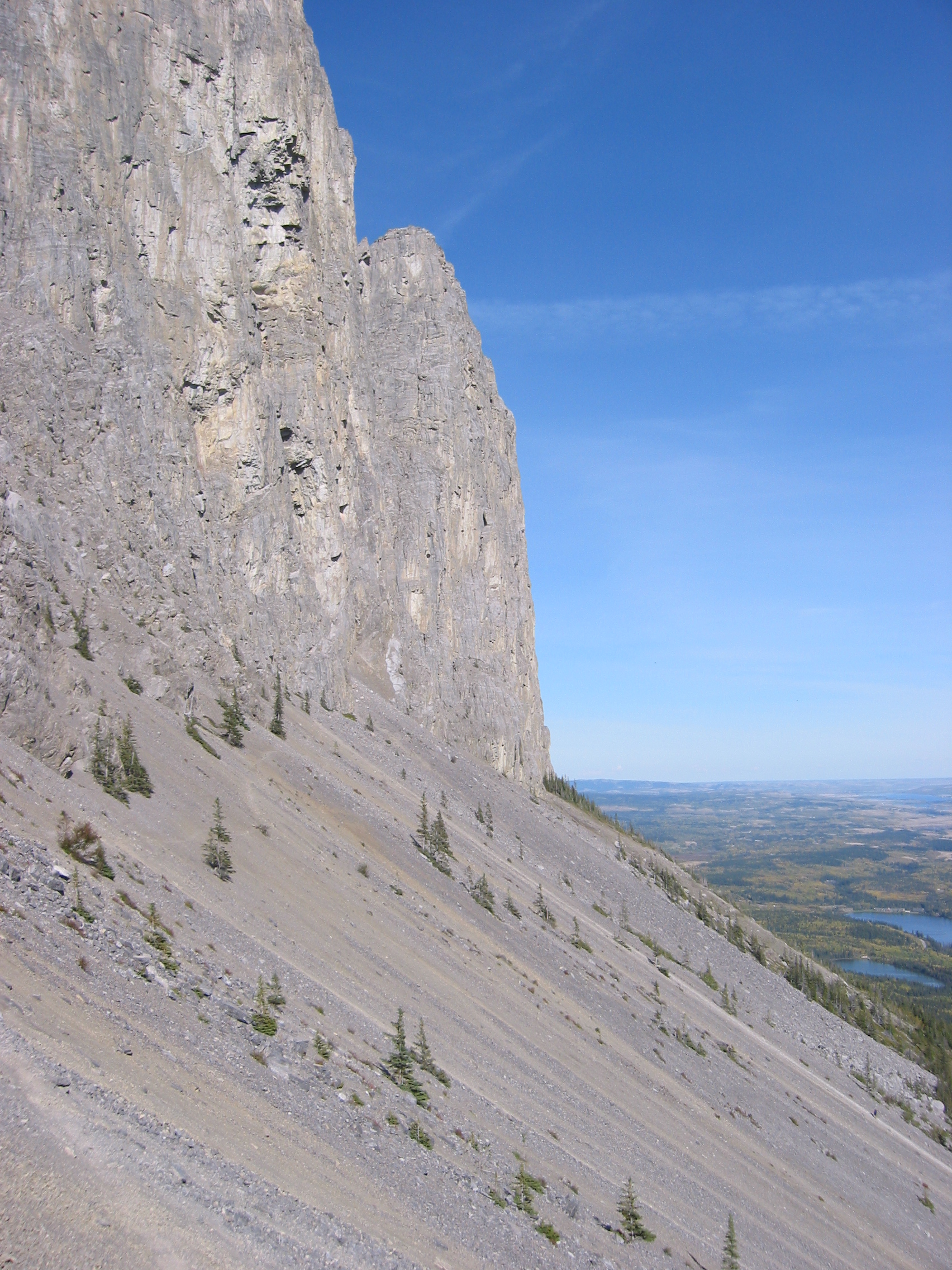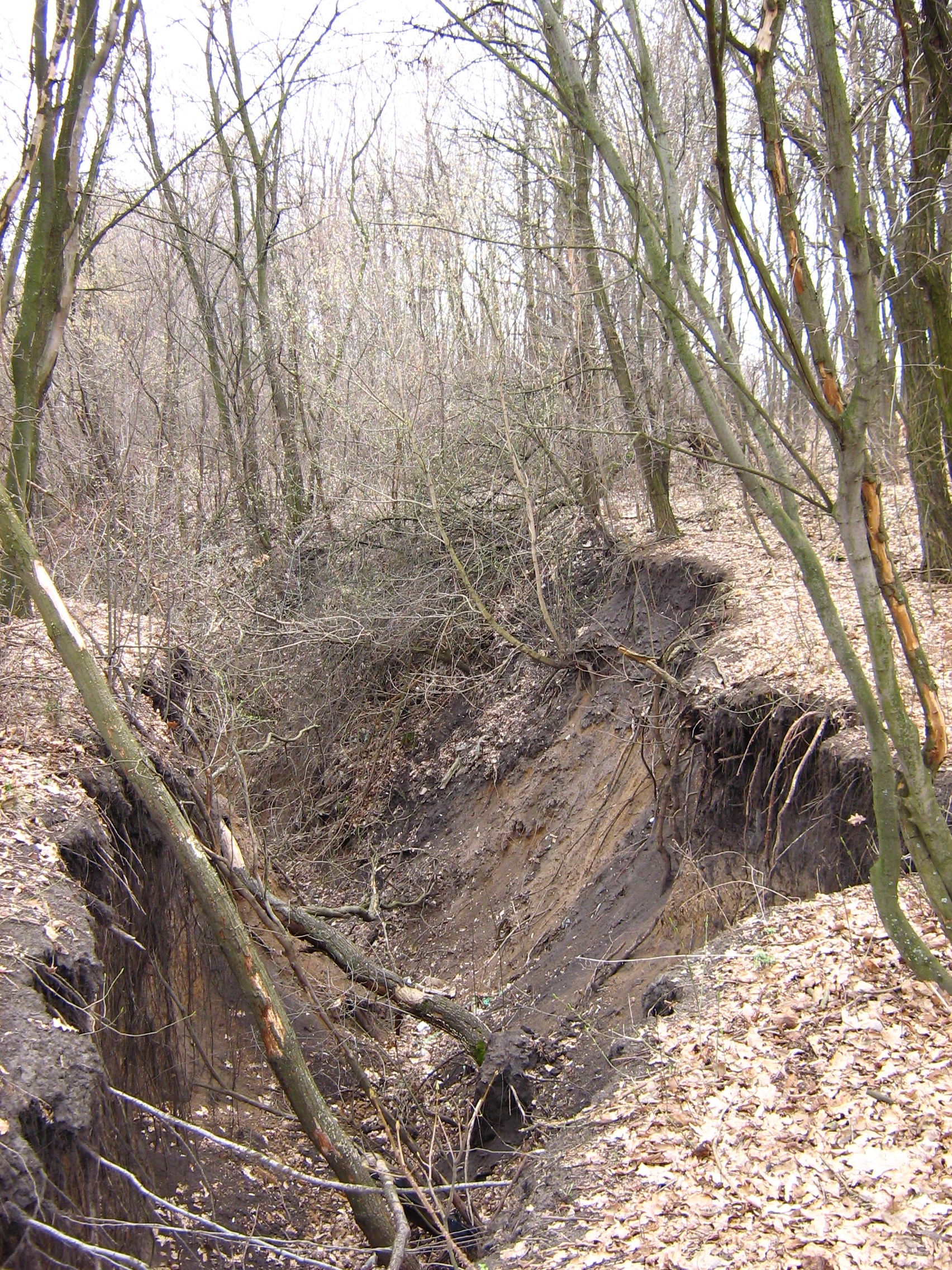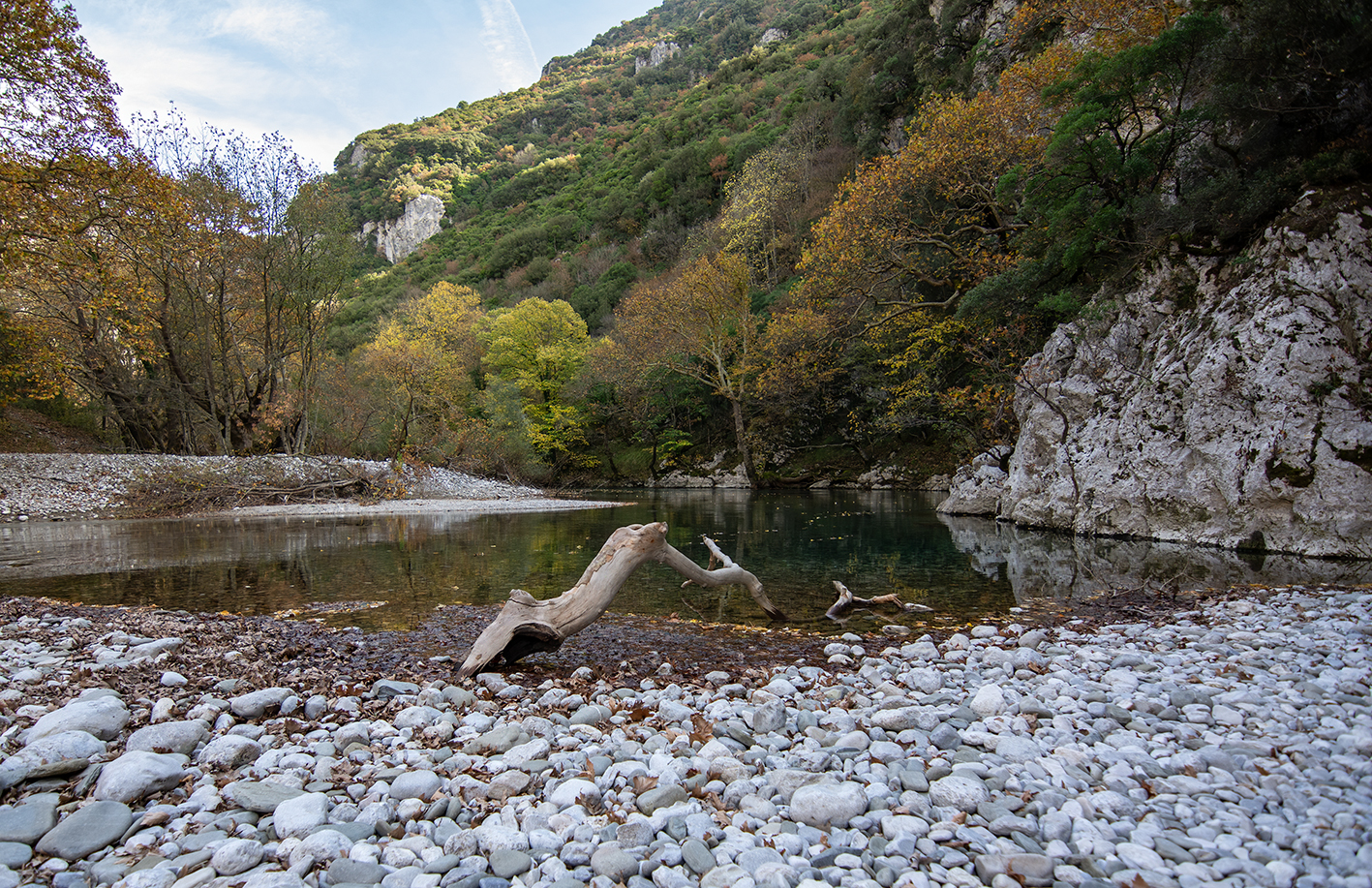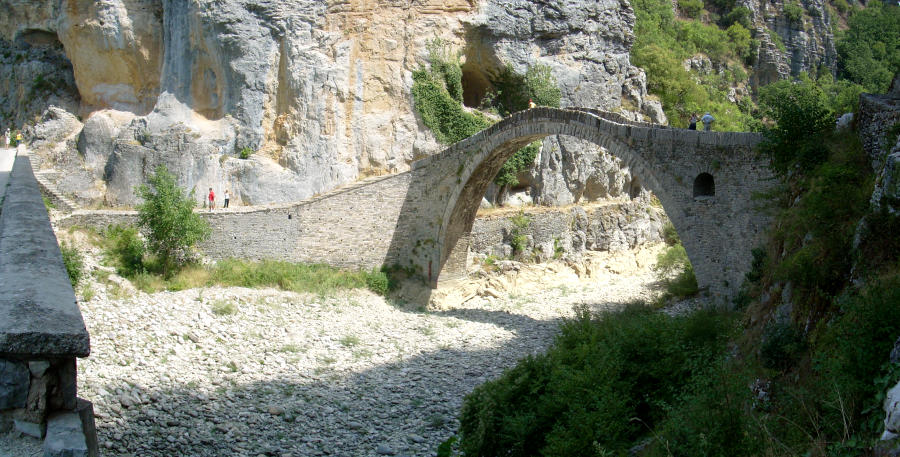|
Vikos Gorge
The Vikos Gorge or Vikos Canyon () is a gorge in the Pindus Mountains of northwestern Greece. It lies on the southern slopes of Mount Tymphe with a length of about 32 km, depth ranging from 120 to 1350 m, and a width ranging from 2500 m to only a few meters at its narrowest part. Vikos is listed as the world's "deepest relative to its width" gorge by the Guinness Book of Records among others. Etymology There are a number of views regarding the etymology of the name: *According to Ioannis Lambridis it derives from Slavic and means 'chasm' or 'gorge'. *According to Evangelos Bogas it derives from the Greek βίκος ' stamnos with ears', which denotes the shape of the gorge and the echoes caused by sounds within it. The word was recorded in the lexicon of Hesychius of Alexandria. *According to Konstantinos Amantos it derives from the Greek phytonym βικίον. *According to Konstantinos Oikonomou it derives from an Albanian word for bridge or wooden pass, ''vig-u'' ... [...More Info...] [...Related Items...] OR: [Wikipedia] [Google] [Baidu] |
Epirus (region)
Epirus ( ; , ) is a traditional geographic regions of Greece, geographic and modern administrative regions of Greece, administrative region in northwestern Greece.Π.Δ. 51/87 "Καθορισμός των Περιφερειών της Χώρας για το σχεδιασμό κ.λ.π. της Περιφερειακής Ανάπτυξης" (''Determination of the Regions of the Country for the planning etc. of the development of the regions, Efimeris tis Kyverniseos ΦΕΚ A 26/06.03.1987'' It borders the regions of Western Macedonia and Thessaly to the east, West Greece to the south, the Ionian Sea and Ionian Islands (region), Ionian Islands to the west and Albania to the north. The region has an area of about . It is part of the wider historical region of Epirus, which overlaps modern Albania and Greece but lies mostly within Greek territory. Geography and ecology Greek Epirus, like the region as a whole, is rugged and mountainous. It comprises the land of the ancient Moloss ... [...More Info...] [...Related Items...] OR: [Wikipedia] [Google] [Baidu] |
Greeks In Albania
The Greeks in Albania are ethnic Greeks who live in or originate from areas within modern Albania. They form the largest minority group in the country. They are mostly concentrated in the south of the country, in the areas of the northern part of the historical region of Epirus, in parts of Vlorë County, Gjirokastër, Korçë, and Berat County. The area is also known as Northern Epirus. Consequently, the Greeks hailing specifically from Southern Albania are also known as Northern Epirotes ( ''Vorioipirotes'', ). The Greeks who live in the "minority zones" of Albania are officially recognised by the Albanian government as the Greek National Minority of Albania (, ''Elliniki Mionotita stin Alvania''; ). In 1913, after the end of five centuries of Ottoman rule, the area was included under the sovereignty of the newly founded Albanian state. The following year, Greeks revolted and declared their independence, and with the following Protocol of Corfu the area was recognised as a ... [...More Info...] [...Related Items...] OR: [Wikipedia] [Google] [Baidu] |
Aoös
The Vjosa (; indefinite form: ) or Aoös () is a river in northwestern Greece and southwestern Albania. Its total length is about , of which the first are in Greece, and the remaining in Albania. Its drainage basin is and its average discharge is . The main tributaries are Voidomatis, Sarantaporos, Drino and Shushicë. The river arises in the Pindus mountains of Epirus, Greece, and generally flows northwest. It enters Albania near Çarshovë, and empties into the Adriatic Sea just north of Vlorë. Generally wild and unpolluted, the river is surrounded by the Vikos–Aoös National Park in Greece, and the Vjosa-Narta Protected Landscape near its mouth. In December 2020, the Albanian portion of the river was designated a "Managed Nature Reserve" by the government. A campaign by the environmentalist groups to designate the whole Albanian part of the course a national park, to guard against the prospective hydroelectric projects, ultimately resulted in the creation of the V ... [...More Info...] [...Related Items...] OR: [Wikipedia] [Google] [Baidu] |
Scree
Scree is a collection of broken rock fragments at the base of a cliff or other steep rocky mass that has accumulated through periodic rockfall. Landforms associated with these materials are often called talus deposits. The term ''scree'' is applied both to an unstable steep mountain slope composed of rock fragments and other debris, and to the mixture of rock fragments and debris itself. It is loosely synonymous with talus, material that accumulates at the base of a projecting mass of rock, or talus slope, a landform composed of talus. The term ''scree'' is sometimes used more broadly for any sheet of loose rock fragments mantling a slope, while ''talus'' is used more narrowly for material that accumulates at the base of a cliff or other rocky slope from which it has obviously eroded. Scree is formed by rockfall, which distinguishes it from colluvium. Colluvium is rock fragments or soil deposited by rainwash, sheetwash, or slow downhill creep, usually at the base of gentle ... [...More Info...] [...Related Items...] OR: [Wikipedia] [Google] [Baidu] |
Gully
A gully is a landform A landform is a land feature on the solid surface of the Earth or other planetary body. They may be natural or may be anthropogenic (caused or influenced by human activity). Landforms together make up a given terrain, and their arrangement ... created by running water, mass movement (geology), mass movement, or both, which erosion, erodes soil to a sharp angle, typically on a hillside or in river floodplains or Fluvial terrace, terraces. Gullies resemble large ditches or small valleys, but are metres to tens of metres in depth and width, are characterized by a distinct 'headscarp' or 'headwall' and progress by Headward erosion, headward (i.e., upstream) erosion. Gullies are commonly related to intermittent or ephemeral water flow, usually associated with localised intense or protracted rainfall events or snowmelt. Gullies can be formed and accelerated by cultivation practices on hillslopes (often gentle gradients) in Farmland (farming), farm ... [...More Info...] [...Related Items...] OR: [Wikipedia] [Google] [Baidu] |
Monodendri, Ioannina
Monodendri () is a village in the Ioannina regional unit (Epirus region) in Greece. It is part of the municipal unit of Central Zagori in the Zagori region, and is located north of the city of Ioannina. Monodendri is built at a height of and retains much of the traditional stone-built architecture. History The name "Monodendri" (meaning "lonely tree" or "single tree") came into use only in the beginning of the 19th century. Its origin is in a very large tree, whose remains still existed in 1910. The village was previously considered a neighbourhood of Vitsa.A. Kathareios (Inspector of the 1st educational region of Epirus) ''Report of Inspection of Zagorochoria in 1913'' As with the other Zagori villages, Monodendri enjoyed an extended period of commercial and economic prosperity during the 17th and 18th centuries. There were schools built, churches in the Byzantine style and luxurious stone manors (). The first school, the Scholarcheion, was`founded in 1750. In the school ... [...More Info...] [...Related Items...] OR: [Wikipedia] [Google] [Baidu] |
Canyon
A canyon (; archaic British English spelling: ''cañon''), gorge or chasm, is a deep cleft between escarpments or cliffs resulting from weathering and the erosive activity of a river over geologic time scales. Rivers have a natural tendency to cut through underlying surfaces, eventually wearing away rock layers as sediments are removed downstream. A river bed will gradually reach a baseline elevation, which is the same elevation as the body of water into which the river drains. The processes of weathering and erosion will form canyons when the river's headwaters and estuary are at significantly different elevations, particularly through regions where softer rock layers are intermingled with harder layers more resistant to weathering. A canyon may also refer to a rift between two mountain peaks, such as those in ranges including the Rocky Mountains, the Alps, the Himalayas or the Andes. Usually, a river or stream carves out such splits between mountains. Examples of mountain- ... [...More Info...] [...Related Items...] OR: [Wikipedia] [Google] [Baidu] |
Voidomatis
The Voidomatis () is a river in the Ioannina regional unit in northwestern Greece, and is a tributary of the Aoös river. General description The main current sources are located in the village of Vikos. Along its path it converges with other streams originating from the banks of Tymfi or the Vikos Gorge. It ends close to Konitsa. The river has a total length of 15 kilometres. The name Voidomatis (meaning "the eye of the ox"), derives from the fact that oxen have clear blue eyes, like the waters of this river. The Voidomatis has been characterized as one of the cleanest rivers in Europe as it does not face any environmental issues. It crosses one of the most beautiful natural locations in Greece and has been part of the Vikos–Aoös National Park since 1973. The river is spanned by a number of stone bridges, the most famous being the Kledonas Bridge. The river is known for water sports such as rafting and kayaking. Geomorphology The Voidomatis is mostly seasonal, with ... [...More Info...] [...Related Items...] OR: [Wikipedia] [Google] [Baidu] |
NATURA 2000
Natura 2000 is a network of nature protection areas in the territory of the European Union. It is made up of Special Areas of Conservation and Special Protection Areas designated under the Habitats Directive and the Birds Directive, respectively. The network includes both terrestrial and Marine Protected Areas. The Natura 2000 network covered more than 18% of the European Union's land area and more than 7% of its marine area in 2022. History In May 1992, the governments of the European Communities adopted legislation designed to protect the most seriously threatened habitats and species across Europe. The Habitats Directive complements the Birds Directive adopted in 1979, and together they make up the Natura 2000 network of protected areas. The Birds Directive requires the establishment of Special Protection Areas for birds. The Habitats Directive similarly requires Sites of Community Importance which upon the agreement of the European Commission become Special Areas o ... [...More Info...] [...Related Items...] OR: [Wikipedia] [Google] [Baidu] |
Vikos, Ioannina
Vikos (), also known as Vitsiko, is a village in the Central Zagori municipal unit in the municipality of Zagori, Ioannina regional unit, Greece. It lies at the northern end of the Vikos Gorge. The main current sources of the Voidomatis The Voidomatis () is a river in the Ioannina regional unit in northwestern Greece, and is a tributary of the Aoös river. General description The main current sources are located in the village of Vikos. Along its path it converges with oth ... river are located in the village. A paved path leads from the village to the Voidomatis springs in the gorge.Rough Guide to Greece p.342 References {{coord, 39, 57, N, 20, 42, E, display=title, region:GR_type:city_source:GNS-enwiki Populated places in Ioannina (regional unit) Zagori ... [...More Info...] [...Related Items...] OR: [Wikipedia] [Google] [Baidu] |
Koukouli, Ioannina
Koukouli () is a village of the Zagori region, in the municipal unit of Tymfi, in northwestern Greece. The village is situated at the southern end of the Vikos Gorge. History The village takes its name from the Greek word of silkworm cocoon; silk production in the wider region of Zagori was popular during the past centuries. The village appears to be founded somewhere in the 13th century. It was included in the treaty signed between the villages of Zagori (there were 14 at the time) and the Ottomans at 1430, which marked the beginning of Ottoman rule in the region. The villages of Zagori formed an autonomous federation for the next centuries. The privileges which were granted to the federation of Zagori and which are due, in the biggest part, to the influence of notable Zagorians over the Sublime Porte, were preserved until 1868. According to these privileges, Zagori was autonomous and self-governed under the surveillance of the Vekili of Zagori. Many inhabitants during the 1 ... [...More Info...] [...Related Items...] OR: [Wikipedia] [Google] [Baidu] |







